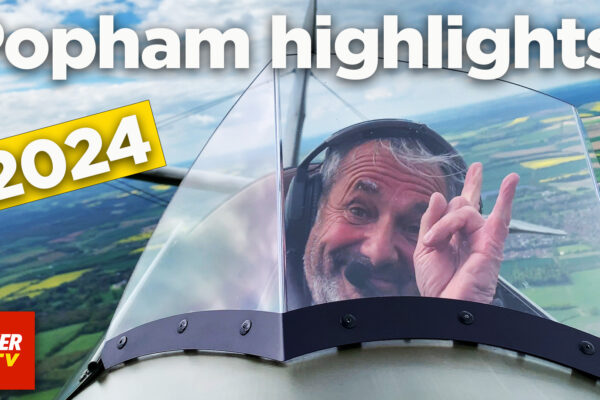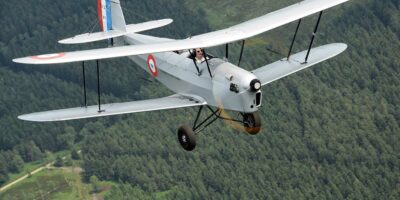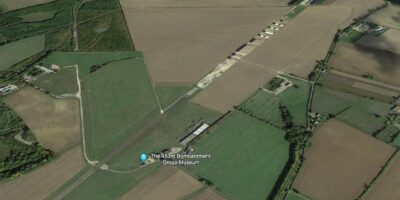In among small talk about column deadlines and the aviation classifieds, Ed the editor asked me, “Your Messenger… is it a keeper, or are you going to move it on?” It was a fair question, as I have owned more aeroplanes than most over the years, and in order to own, I’ve had to sell. That said, I don’t think I’ve ever purchased one with the express intention of selling. Our chat then drifted, as it usually does, to ‘Aeroplanes We Lust After’, which, given aviation’s love of acronyms, spells AWLA. On this occasion the ‘L’ was bilateral (as in Ed and me) for the General Avia F-20TP Condor I had seen for sale.
Designed by Italian aviation doyen Stelio Frati, it was developed from his four-seat F20 Pegaso light twin (also built by Frati’s special projects company General Avia) and equipped with a large, military-style sliding canopy and a pair of tip tanks which made it look more like a slightly larger Marchetti SF260. Another Frati design, already the subject of AWLA by most aviators. The Pegaso is already pretty well-equipped with a pair of 300hp Continentals – or a lot for something the size of a Seneca – but the Condor boasts an Allison turbine from a Jet Ranger on each wing. That makes a total of 900hp, in case you were wondering, and it’s still no bigger than a Seneca… Intended for the military, it was exhibited at the 1983 Le Bourget show and although development continued for a while, it didn’t find favour with the warriors. Unlike most of its ilk, it still exists…
“The Monocoupe 90A … wish I’d flown it more, wish I still had it”
Frati’s aforementioned SF260, which first flew in about 1965, was also designed as a military trainer and nearly 1,000 of them have been sold all over the world, mainly to third world airforces. A few were made for private customers and I believe you can even still purchase a new one… Most are powered by 260hp Lycoming flat sixes but Frati’s obvious affection for the Allison led him to create the SF260TP which first flew in 1980. Obviously faster, but the long schnozz necessary to balance the turbine’s much lighter weight – not to mention the four paddles bolted to it – meant its Frati lines were compromised. It didn’t look as good as its piston sibling, and definitely nowhere near as cool as the Condor, whose cowls are also long but look perfectly suited to the wings. But… neither Ed, nor I, can run to any variant of 260, let alone a TP, and definitely not to a Condor, despite a recent price reduction of $80,000. That still leaves a price tag of $800,000, and so it should. Find me something else that looks like it does and does what it does. On which subject, there’s also a Pegaso to be found in the ads, also reduced by a similar percentage to something almost affordable. Tempting, but maybe not…“So,” said Ed, “since we can’t feature a Condor (or anything with a turbine), how about a few words on an aeroplane you’ve already owned but wish you’d never sold?” Well, that would be most of them, but I suppose one which does spring to mind is the Monocoupe 90A.
I can’t remember how I came by it, and a look at my logs suggests I hardly ever flew it. It’s a very long time ago so I can’t remember why that was either, but I do remember the significant bits. The Monocoupe was the work of Don Luscombe who went on to build nearly 6,000 of his eponymous 8 models, among much else. The abiding memory of the Monocoupe though was the look. Power came from a five cylinder Lambert R-266 radial covered by a relatively deep cowl with signature bumps over each of the engine’s rocker boxes, and like most radial cowls, the diameter eats into the windscreen’s depth obliging designers to sweep the screen downwards on each side so the pilot can see something of the runway. That styling necessity, combined with a sharply tapered fuselage creates a Raptor’s Eye look, that and the small rounded fin, the nicely rounded wingtips and the stand tall ground stance. The legs are long to clear a long propeller, and the spats are huge. Proper art deco… And it felt a great deal more powerful than 90hp says it should. 266 is a lot of cubes for just 90 horses, so I guess it’s the radial torque effect, but it certainly went, and it was agile. There was some adverse yaw as you might expect, but if you used the rudder like you should, it went round like an aerobat. Wish I’d flown it more, wish I still had it. Saw it at Goodwood a couple of years ago, looking pristine, now owned by a German chap…
I wrote about the joy of a first proper Messenger trip last month, so I guess that was a prompt for Ed’s first question. Won’t mention the list of new jobs revealed by a longer sojourn in the cockpit, but I knew that would happen. The real discovery was that Messenger is one I can keep because it suits my needs, even though it’s properly vintage. There’s room for all the stuff I seem to carry about, and even a couple of passengers. It goes in and out of short fields with ease, the cockpit is wide and roomy, which adds to the sense of space, heightened by the panorama flooding in via that unfashionably deep windscreen. But most important, it’s absolutely delightful to fly. Could do with a bit more range perhaps, but the addition of a mixture control might help. Another job… So, yes, it’s a keeper, thanks for asking.
Working vintage aircraft and cars make Mark particularly happy.
[email protected]







